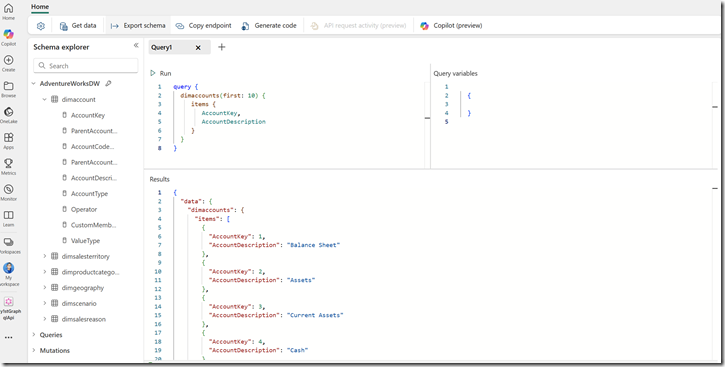Simplifying API Development: Build GraphQL APIs Effortlessly with Microsoft Fabric
In today’s fast-paced digital world, delivering data to applications quickly, securely, and flexibly is crucial. That's why developers love GraphQL — it gives them the power to query exactly what they need, nothing more, nothing less. But setting up and maintaining a GraphQL API from scratch can be time-consuming.
Enter Microsoft Fabric: your all-in-one data platform that now makes it incredibly easy to expose your data as a GraphQL API, with minimal setup and zero infrastructure overhead.
Why GraphQL in Microsoft Fabric?
Traditionally, building APIs meant provisioning infrastructure, writing boilerplate code, and managing endpoints. But Fabric changes the game by:
Auto-generating GraphQL APIs directly over your Lakehouse tables
Providing a no-code or low-code experience for developers and data engineers
Offering a single, unified API endpoint to query multiple data sources within your workspace
This means you can go from raw data to a production-ready API in minutes.
Here's how easy it is:
Create a Semantic Model in Microsoft Fabric using your Lakehouse data.
Enable API Access to the model via the GraphQL API endpoint.
Query your data with standard GraphQL syntax — no backend service, no custom resolvers required.
Example GraphQL Query:
query {
SalesOrders {
OrderID
Customer {
Name
Email
}
TotalAmount
}
}
Here is an example for GraphQL API in fabric. You can then copy the endpoint in your application and start querying the data.
